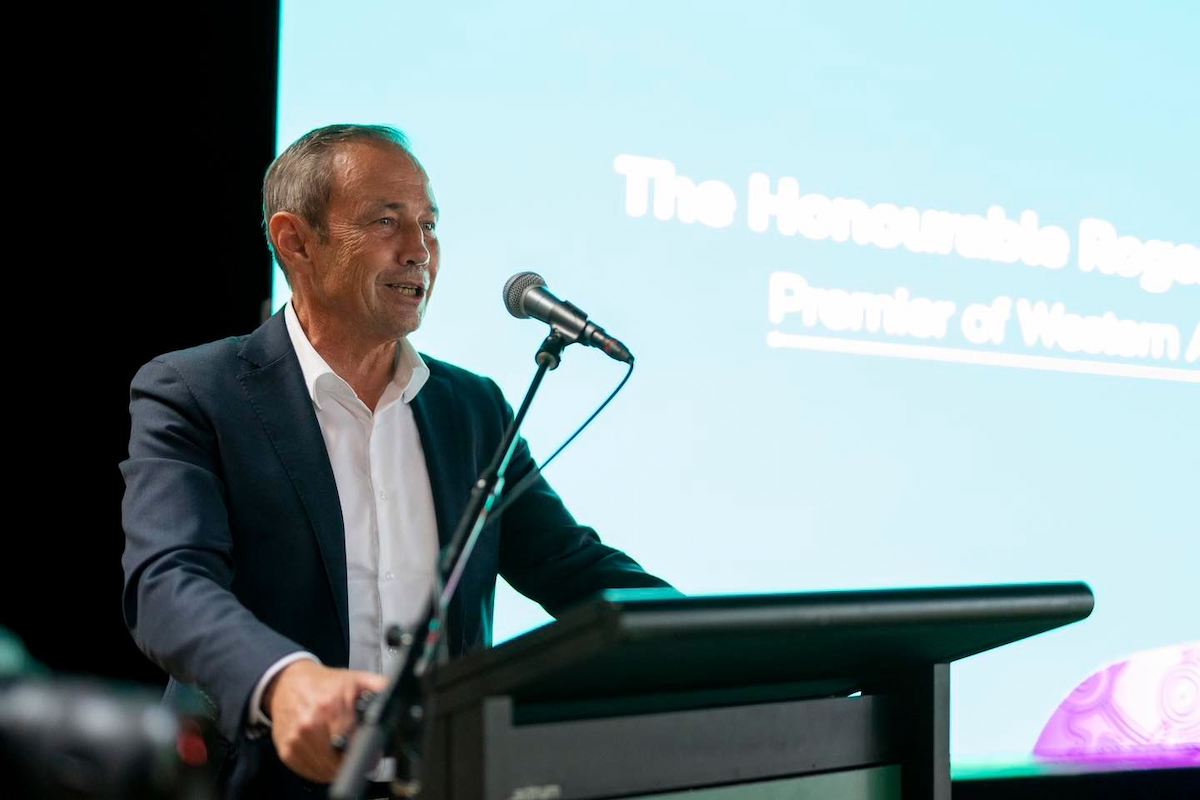The Western Australian government has unveiled its plan for the arts and culture sector. Titled Creative WA, it is a 10-year strategy designed to secure and create jobs, foster innovation and celebrate diversity. More than $54 million in State Government funding has been ear-marked for initiatives including new Creative WA Fellowships and Internships that prioritise young and First Nations people and those living in regional and outer metropolitan locations to help them become sector leaders and grow the state’s creative economy.
The Creative Learning program, which includes the Creativity for Schools program and Creative Learning Partnerships Program, will also receive a three-year extension with $1,763,000 allocated per year.

WA Premier Roger Cook at the launch of Creative WA.
The creative sector already contributes $3.3 billion annually to WA’s economy and employs over 51,000 people. Creative WA recognises its the role in the state’s economic and social fabric and the challenges it faces, including workforce development, equitable access and the evolving role of creativity in a digital age.
“Arts and culture are at the heart of vibrant communities,” said WA Premier Roger Cook. “By investing in this sector, we’re not just creating jobs and driving innovation – we’re enriching lives and building connections.”
WA Arts Minister David Templeman spotlit the dual focus on economic development and cultural celebration. “Creative WA will ensure our artists and cultural workers thrive, while also showcasing our stories and unique identity to the world,” he said.
The challenges
The Creative WA plan comes at a crucial time. Over the past decade, digital disruptions, the COVID-19 pandemic, and economic shifts have exposed vulnerabilities in the state’s creative sector. Rising production costs and changing audience behaviours have made it harder for artists and organisations to sustain their work.
Workforce capacity has also been identified as a critical issue, with young creatives and mid-career professionals citing limited opportunities and precarious employment conditions as barriers.
To counter these issues, Creative WA will prioritise training, mentorship, and support for the sector’s workforce. Plans include fellowships for artists, targeted training for creative professionals, and initiatives to address skills gaps in areas like live event production and curatorial roles.

The Revealed 2024 exhibition, Fremantle Arts Centre. May 2024. Photo © Ella McDonald. Image courtesy AACHWA
Celebrating Diversity and Inclusion
A core principle of Creative WA is inclusivity, with a focus on empowering underrepresented communities: young people, First Nations peoples, and regional and outer metropolitan communities.
WA’s Aboriginal cultures take centre stage in this vision. The government’s flagship project, the Aboriginal Cultural Centre, will open in 2030 on Whadjuk Noongar land along the Swan River. This state-of-the-art facility aims to celebrate and preserve Aboriginal art, culture, and languages while fostering truth-telling and reconciliation.
First Nations artists and cultural leaders will play a pivotal role in shaping this space. “Aboriginal culture, art, and languages are inseparable,” said Minister Templeman. “By placing them at the heart of our strategy, we’re honouring their significance while creating new opportunities for future generations.”

Digital rendering of Edith Cowan University’s City Campus. Image supplied
A Sustainable Creative Ecosystem
Beyond workforce development, Creative WA outlines investments in cultural infrastructure and regional initiatives. The $1.66 billion Perth City Deal, including the new Edith Cowan University City Campus, will establish a hub for the performing arts and creative industries. Scheduled to open in 2026, it will house the Western Australian Academy of Performing Arts (WAAPA), enhancing training and career pathways for students across the state.
Perth Film Studios, another flagship project, is set to position WA as a global player in the screen industry. With a $233.5 million investment, it is hoped the studios will attract international productions and nurture local talent. In tandem, the WA Government is expanding its Digital Games Fund to boost innovation and job creation in the gaming sector.
Regional and outer metropolitan areas are also key to the strategy. Initiatives will focus on increasing access to cultural events, supporting local artists, promote cultural tourism, enhance liveability and foster connection.
For more information on Creative WA, visit this link.

